Galaxy S9+ vs. Galaxy Note 8: Which should you buy?
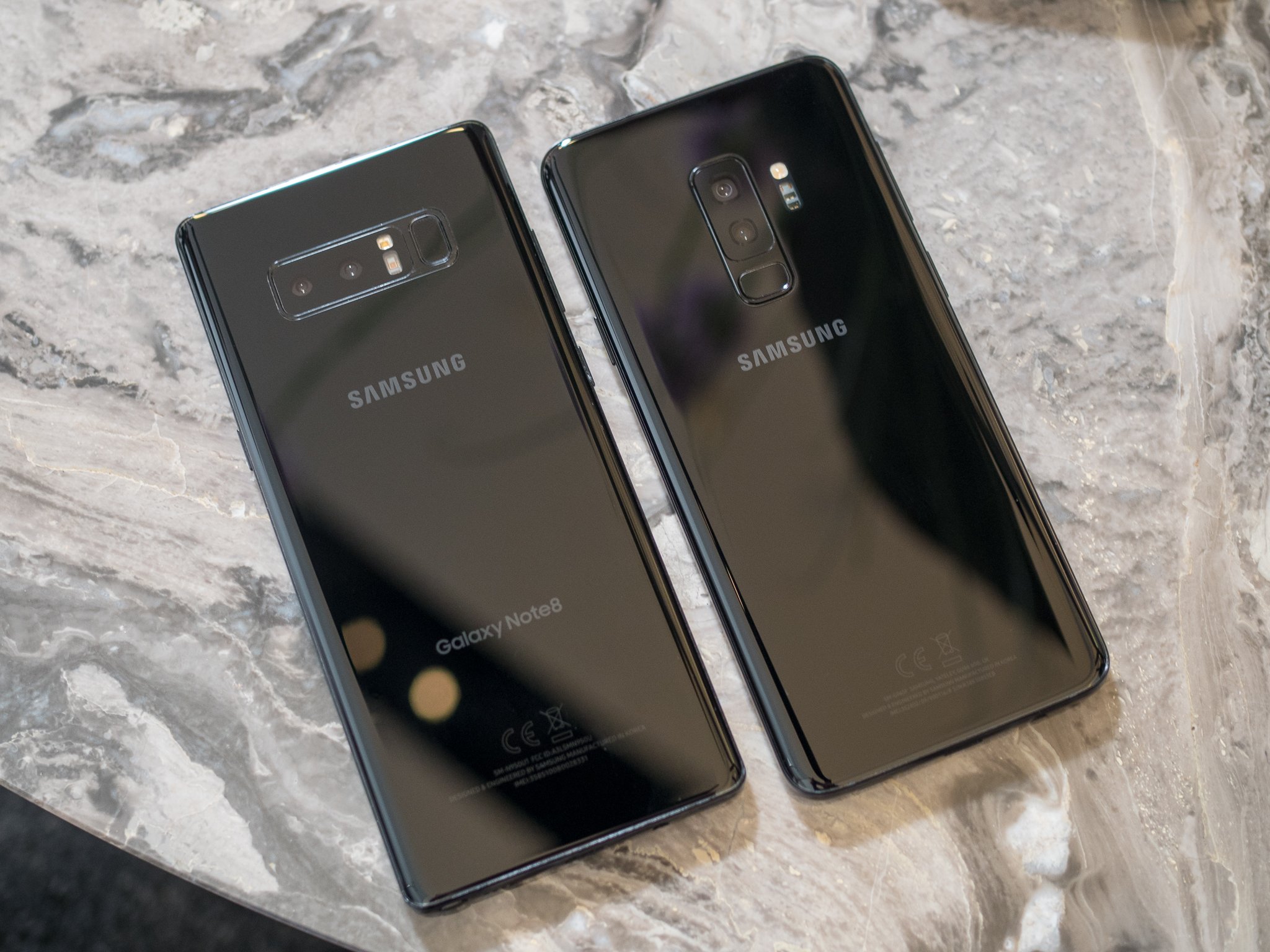
Samsung's dual-flagship approach is great for smartphone super-fans, because we get to see a new top-of-the-line phone from the company twice a year. The Galaxy S series refreshes early on in the year, followed by a Note phone about six months later.
But for someone who holds off on a purchase and doesn't necessarily upgrade every six months (or even each year), it creates a quandary when you go to buy a Samsung phone: do you buy the Galaxy S, or the Note? Right now you can get the Galaxy Note 8, which is still just a handful of months old and very much a modern phone, but if you want the absolute latest tech from Samsung it has actually been supplanted by the Galaxy S9+.
The Galaxy S and Galaxy Note series have converged over the past few years, but it hasn't ever been this close — here's what you need to consider when choosing between the two.
What's the same
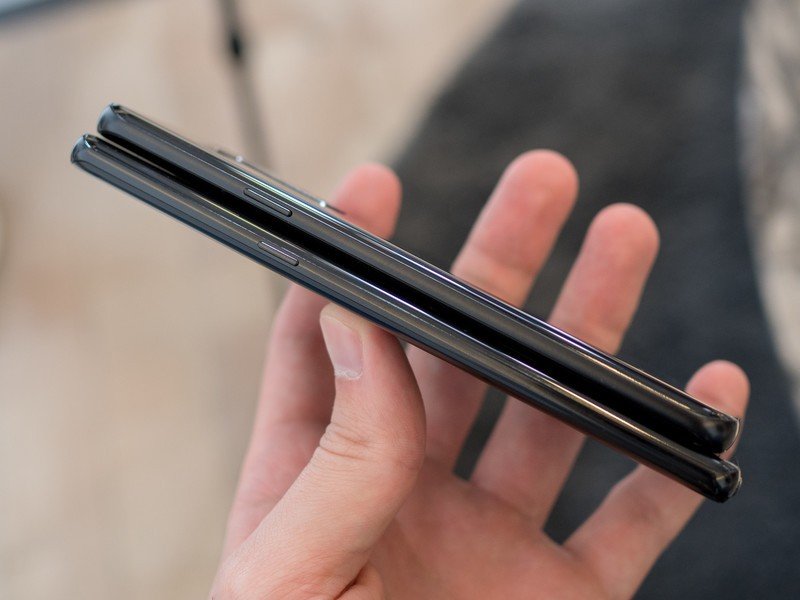
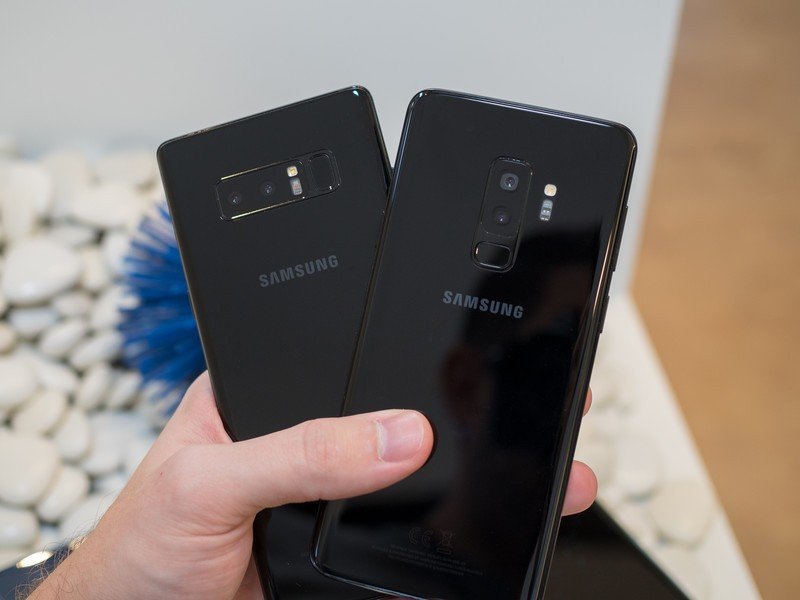
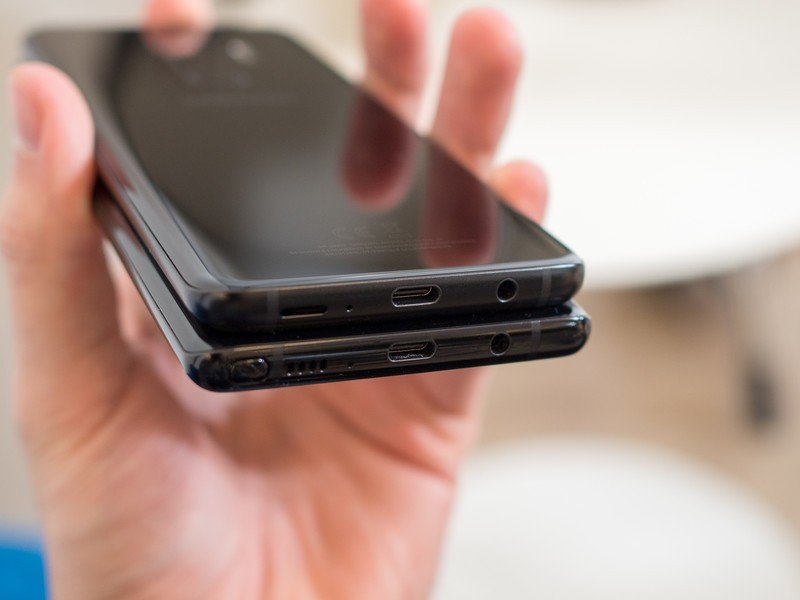
The Galaxy S9+ has a few improvements over the Note 8, but as you'd expect considering their proximity much has been carried over. The two phones share a common platform in their hardware when it comes to the quality of the materials and the overall design, with the only real change being the GS9+'s different metal finish. The Galaxy S9+'s display has improved from the GS8+, but is indistinguishable in quality from the Note 8 — so yeah, both look amazing. And of course there's just a 0.1-inch diagonal difference in size.
This is the same core hardware platform supporting both phones.
The rest of the hardware features like waterproofing, an SD card slot, a headphone jack, wireless charging, Quick Charge 2.0 and the supporting specs are all the same. Yes the processor has been upgraded to a Snapdragon 845 in the Galaxy S9+, but that shouldn't make you forget about the Note 8's considerable speed in its own right. Both have the same RAM and storage, too.
Even though the Galaxy S9+ is running Oreo out of the box, I won't even claim it's a big difference. The Galaxy Note 8 should have its Oreo update in short order, and it will have as many of the same software features as possible. But even that aside, Samsung's take on Oreo isn't all that removed from the Nougat launched on the Note 8 — all else being equal in the phones, don't choose one over the other just to get it.
What's different
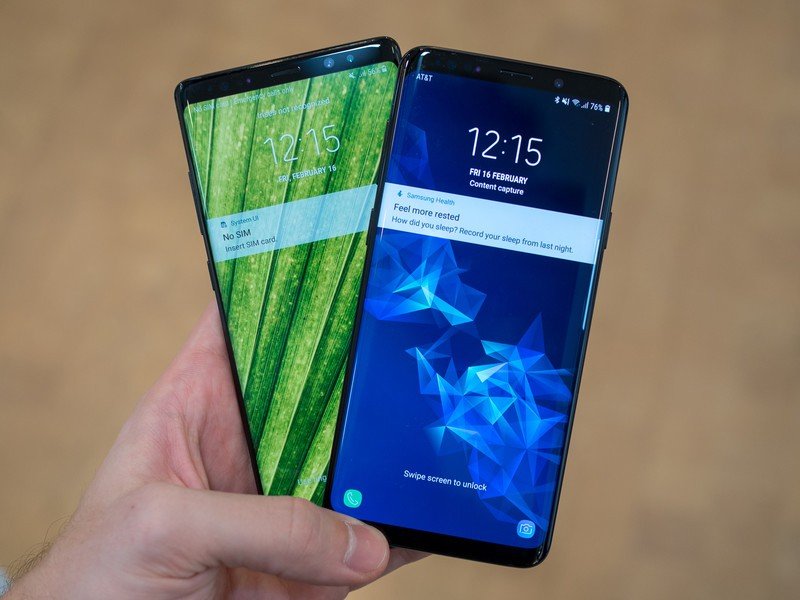
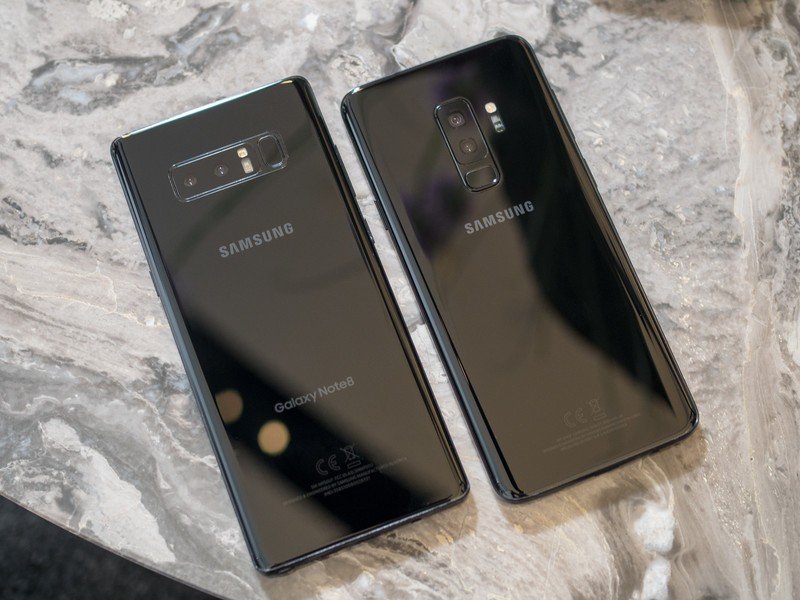
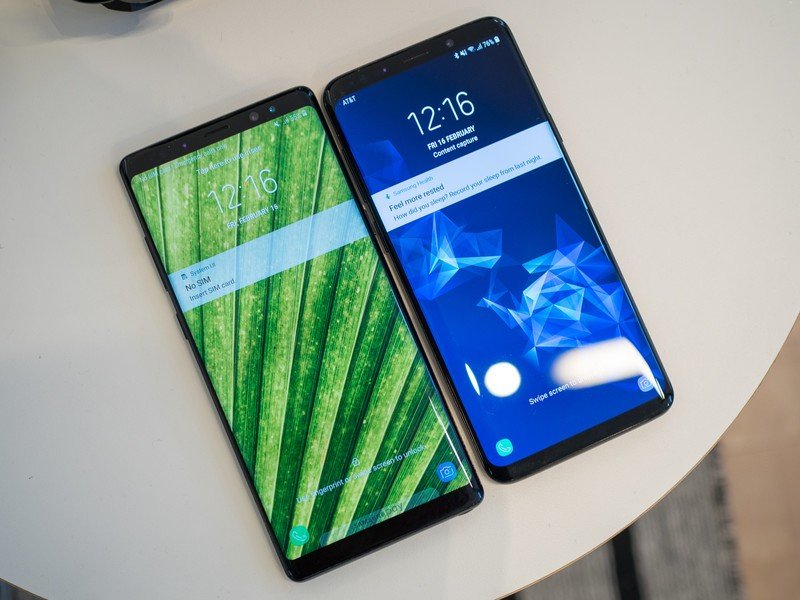
Physically, it's simply a bit easier to handle the slightly smaller Galaxy S9+. We're talking about 4 mm in height, 1 mm in width and 6 grams in weight, but add it all up with the slightly more rounded corners and the GS9+ feels like less of a behemoth than the Note 8. If the Note 8 is outright unmanageable for you the GS9+ won't feel like an entirely different phone, and you should consider the regular Galaxy S9 instead — but I'll never complain about a phone being smaller and easier to hold, even if it's subtle.
Be an expert in 5 minutes
Get the latest news from Android Central, your trusted companion in the world of Android
A slight drop in size and a better fingerprint sensor placement definitely make a difference.
Perhaps more important than the size is the fingerprint sensor placement on the Galaxy S9+. You can easily reach up and touch the lower, center-mounted fingerprint sensor without shifting the phone around in your hand. It's something you do dozens (perhaps hundreds) of times per day, and it's something you don't really think about until you've lived with the far inferior placement on the Note 8.
The Galaxy S9+ also introduces stereo speakers. A phone the size of the Note 8 really should have them as well, but at least you have access to it with the GS9+. The speakers aren't dramatically louder, but getting stereo separation and not having the audio easily blocked by your finger when holding the phone in portrait mode is another subtle usability improvement. And yes, the battery on the Galaxy S9+ is slightly larger, 3500 versus 3300mAh. That 6% bump in conjunction with the slight efficiency improvement from the Snapdragon 845 helps battery life, but it's not a massive shift.
Note 8's camera is no slouch, but the Galaxy S9+ easily bests it with no clear downsides.
One could say the biggest improvement in the 2018 phone is its main camera. This is an all-new setup for Samsung, with a brand new sensor and a variable aperture. The new sensor is capable of taking fantastic photos with less noise and sharper lines in all sorts of scenes, but really shines when it comes to low light photography. It also has 960 fps super slow-motion video capture, which is a neat trick. The Note 8's camera is no slouch, but the Galaxy S9+ easily bests it with no clear downsides.
The only benefit the Note 8 has going for it in this comparison is the feature that gives it its name: the S Pen stylus. If you like to draw or write notes by hand, there isn't anything like the S Pen on any other phone. Sure the Galaxy S9+ has some of the same features, but when it comes to getting that super-precise input there's no replacement for having the S Pen at the ready.
Bottom line: Which should you buy?
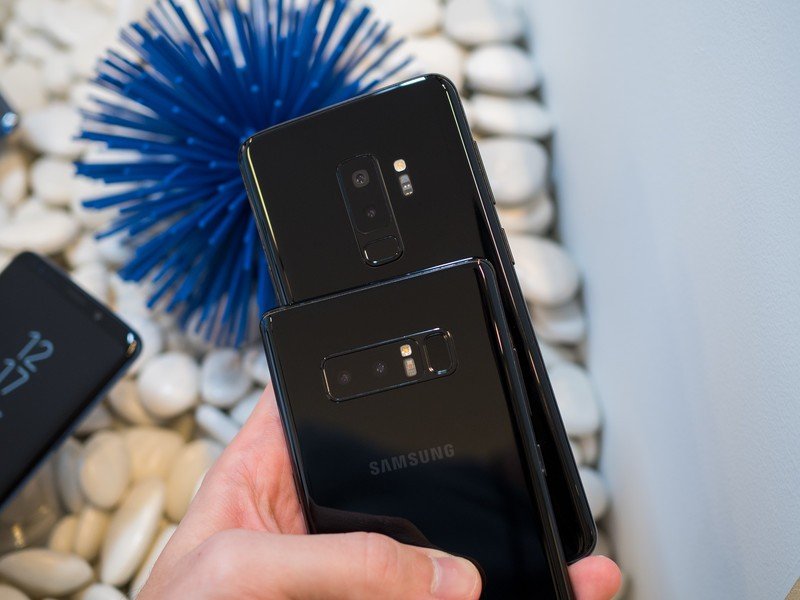
This really feels like a toss-up. Not only do these two phones have nearly identical experiences, but they also cost about the same. Though the MSRP of the Note 8 was a bit higher, around $940, a few months on the market and the release of the GS9+ has brought that down in many places to the same price as the newer phone. Given their similarities we know basically no one will be upgrading from a Note 8 to a GS9+, but these two will be cross-shopped for someone coming from an older phone.
Unless you need the S Pen, you should buy the Galaxy S9+.
With so much shared between the phones in hardware, design and capabilities, this really comes down to evaluating the few differences and how they'll actually matter in daily use. The Galaxy S9+ offers a slightly more compact size, a little better battery life, an improved main camera and stereo speakers — but importantly, it doesn't make any compromises compared to the Note. The Note 8 offers a tiny bit more room to work on the screen, and obviously the excellent S Pen — but that's it.
So either you need a stylus and you buy the Note 8, or you'll be better served overall by the Galaxy S9+.
Update July 2018: Updated to reflect the Note 8's position in the market with the latest pricing information.
Andrew was an Executive Editor, U.S. at Android Central between 2012 and 2020.


